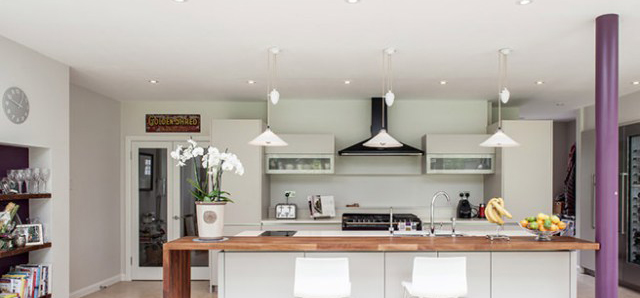Do you ever find yourself needing to buy light bulbs, but standing in the store isle overwhelmed by all the options? It can be maddening.
What used to be a simple task now requires an engineering degree.
What’s the difference between LED and CFL anyway?
Does it really matter?
In this article, we’ll cover the major types of bulbs and the proper application for each. The next time you need to buy a bulb, no problem. You’ll know exactly what to get… and why.
Never Do This Again – Know Your Bulbs!
There are three basic categories of light bulbs: incandescent, halogen, LED, and fluorescent. Here are the need-to-know pros, cons, and applications for each type of bulb:
Incandescent Light Bulbs
These are the traditional bulbs. Not many years ago, they were pretty well the only bulbs you’d find for general household use.
Basic Information on Incandescent Light Bulbs:
- They lend a cozy effect and compliment skin tones
- They don’t contain mercury
- They can be used with dimmer
- Most require 40 to 100 watts of electricity per hour
- They are heavy on electricity, compared to other light sources
- Incandescent bulbs are relatively cheap, produce a steady warm light, and can last up to 1,000 hours.
Incandescent bulbs are all-purpose. Given the movement towards energy conservation, they are getting difficult to find in many stores, however.
Halogen Light Bulbs
These are incandescent bulbs with a twist: there’s a little bit of a halogen inside the bulb. That helps extend the life of the filament.
Basic Information on Halogen Light Bulbs
- Halogen bulbs imitate the natural daylight, hence they are also known as “white light”
- They supply 25 to 30 percent more light than incandescent bulbs, meaning they are more cost-effective
- They last about twice longer than incandescent bulbs
- They can be used with a dimmer
- They glow at a higher temperature, increasing the associated fire hazard
Halogen bulbs are excellent for task lighting. When changing the bulb, use a glove or cloth between your hand and the bulb. That’s not only to protect against any remaining heat, but to avoid getting oils from your skin on the bulb. That could cause the bulb to fail prematurely.
LED Light Bulbs
LED stands for “light-emitting diode.” It is a bulb without a filament. It’s really a semiconductor chip!
Basic Information on LED Light Bulbs
- LED uses the latest lighting technology and consumes less power compared to other commonly used light sources
- LED bulbs about 10 years – that’s longer than any other bulb on the market today
- LEDs are exceptionally energy-efficient
- LED bulbs do not give diffused light; they provide focused light
LED bulbs are primarily used for undercabinet lighting and task lighting. Recent developments, though, are finding ways to utilize them in other applications.
CFL (Compact Fluorescent Light) Bulbs
Compact Fluorescent Lamps (CFLs) use mercury and cathodes to produce light. The mercury makes breakage dangerous and disposal a problem.
- CFLs are cost-effective, using 20-40% less energy than incandescent light bulbs
- They can last up to 20 times longer than incandescent light bulbs
- They are cheap, compared to other light sources
- They deliver a warm light, similar to incandescent bulbs
- They can’t be used with dimmers
CFLS are a good choice to save energy at home, and they can be an adequate replacement for fluorescent bulbs in most situations. Here’s more info on that topic: Benefits of Energy Saving Lighting Techniques.
Check the chart below to compare the efficiencies of each bulb type.
Types of Light Bulbs and Why They’re Different – Conclusion
Know your application before going to the store, then use the chart above to select the most energy-efficient product that fits.
Greener bulbs cost more up front, but they save money over time. Plus, you won’t be needing to climb a ladder to change those ceiling bulbs quite so often… maybe not for years!
Abel Cane lives in the Pacific Northwest. Lighting is one of Abel’s favorite topics. Catch up with the author on Twitter @boomalive.
